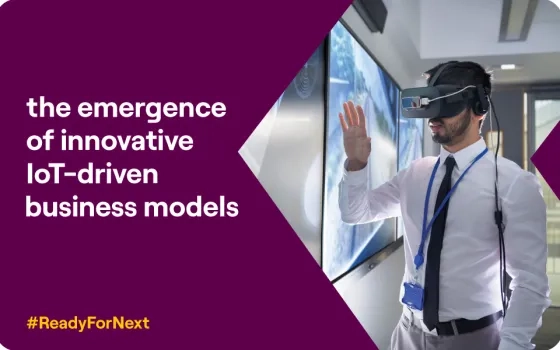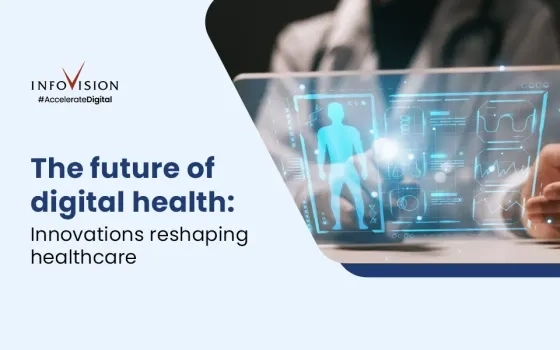The automation industry appears to be evolving at a faster rate right now than at any time in its history, with IIoT being one of the primary drivers of change. IIoT and Digital transformation, enabled in part by the increasing convergence of operational technology (OT) and information technology (IT), is key for all organizations today, including both end users and OEMs. We’re seeing an explosion in the number and variety of analytics applications and suppliers. Historians, MES, and other non-control applications continue to move to the Cloud, which enables significant reductions in IT infrastructure and support costs. One of the biggest end user challenges remains unscheduled downtime. IIoT-enabled solutions, such as remote monitoring and predictive maintenance, can help to minimize unscheduled downtime.
Advanced Analytics, Artificial Intelligence, and Machine Learning Becoming IIoT Enablers
Organizations have long used business intelligence (BI) platforms and enterprise manufacturing intelligence (EMI) tools to discover and understand the underlying reasons and details about what happened and why. Now, with the industrial space becoming much more complex, dynamic, and infused with Big Data, IIoT is helping manufacturers turn to advanced analytics, artificial intelligence, and machine learning to support predictive and prescriptive analytic solutions. By connecting previously stranded data from smart sensors, equipment, and other assets with advanced applications and predictive analytics in the Cloud, IIoT is becoming a strategic enabler to improve manufacturing performance.
Thanks to IIoT, More Industrial Devices Are Living on the Edge
One key part of this new growing IIoT infrastructure are edge devices or intelligent gateways. These collect, aggregate, filter, and relay data close to industrial processes or production assets. They will also be capable of running analytics, detecting anomalies in real time, and raising alarms so operators or controllers can take appropriate actions. Moving analytics to the edge of the network, and thus closer to the data sources, can help improve manufacturing process quality and production yields. Inexpensive sensors and processors enable more production data to be collected and some data to be processed at the edge. Edge computing with embedded analytics is also an alternative if it’s not viable to run the analytics in the Cloud, or the OEM does not choose a cloud-based solution.
The “edge” of the industrial network is becoming populated by Ethernet, wireless, and cellular gateways; Ethernet switches and routers; and small computers, such as Raspberry Pi’s. These edge devices help bridge IT and OT environments; bringing legacy sensors, devices, controllers and assets into automation or enterprise architectures. Today’s edge devices target device-to-cloud integration to further industrial internet-based strategies designed to improve business performance. These include protocol conversion gateways for interfacing disparate networks to device-to-cloud integration.
IIoT Helping Assets to Have a Digital Twin
IIoT and Digitalization provides the ability to produce a digital copy of an asset, known as the Digital Twin. This enables companies to perform simulation, testing, and optimization in a virtual environment before commit-ting actual resources. A digital twin is virtual representation of a physical asset. This includes an archive of historical and real-time data, drawings, models, bills of material, engineering and dimensional analysis, manufacturing data, and operational history that can be used as a baseline when benchmarking performance.
Similarly, real-time data acquired via integrated sensors or external sources is used for analytic tasks, including condition monitoring, failure diagnostics, prescriptive and predictive analytics. Knowledge gained adds value to asset life; improving efficiency, reducing downtime, anticipating failures, and for continuous improvement at the design and manufacturing levels. With a digital twin, closed-loop design can now extend through the entire product lifecycle.
IIoT Helps to Leverage Augmented and Virtual Reality (AR/VR)
As manufacturers hire new employees, they are implementing simulator-based training to convey plant knowledge; leveraging technologies, such as gaming, augmented/virtual reality, and 3D immersive, with wearable devices, such as the Microsoft HoloLens. IIoT provides much of the input to enable this technology. This allows real plant and job functions, controls, and assets to be replicated, providing a high-fidelity experience. Simulation improves learning and is effective in developing skills to deal with unanticipated plant situations, thus increasing workers’ confidence in performing their job functions and ability to deal with an emergency. Other simulation applications include testing and validating new software, supporting system migrations, and program testing and validation.
MQTT as an IIoT Messaging Protocol
Message Queueing Telemetry Transport (MQTT), a machine-to-machine (M2M) data transfer protocol, will grow in its use as a messaging protocol for IIoT. MQTT is designed as a lightweight publish/subscribe messaging transport, used for connections with remote locations where a small code footprint is required and/or network bandwidth is at a premium. For example, it has been used for mobile applications because of its small size, low power usage, minimized data packets, and efficient distribution of information to one or many receivers.
Cybersecurity and IIoT
Improved cybersecurity technologies and approaches, such as Achilles Certification, will help to somewhat lessen those concerns so that cyber-security will no longer remain the single greatest headwind to IIoT-enabled solutions in industrial and critical infrastructure environments. Achilles Communications Certification offers two levels of certifying the network robustness of industrial devices. It provides manufacturers of devices and systems in critical infrastructure markets an independent verification that the certified device meets communications robustness benchmarks that are industry-recognized and mandated by major critical infrastructure operators
Recommendations
End users and OEMs alike should embrace, rather than resist, the positive disruptive change that IIoT brings. IIoT’s initial focus should be on asset management and avoiding downtime. Automation suppliers must help their customers calculate the ROI justification needed to invest in these new IIoT solutions. Legacy assets must remain a part of, and be integrated into these latest IIoT technology solutions, wherever possible. All in all, these trends and changes make this a very exciting time to be in the automation space, and the future is likely to be even brighter.
“Reprinted with permission, original blog was posted here”. You may also visit here for more such insights on the digital transformation of industry.
About ARC Advisory Group (www.arcweb.com): Founded in 1986, ARC Advisory Group is a Boston based leading technology research and advisory firm for industry and infrastructure.
For further information or to provide feedback on this article, please contact lkanickaraj@arcweb.com
About the Author:
Greg Gorbach
Vice President, Information-Driven Manufacturing
Greg spearheads ARC’s transformative technologies for industry initiatives, including Analytics and Big Data, Cloud Computing, Mobility, and Industrial Internet of Things. ?Greg’s team focuses on the digital transformation taking place throughout the industrial space. Known by terms such as Industrial Internet of Things, Industrie 4.0, Information-Driven Manufacturing, Connected Manufacturing, Smart Manufacturing, Industrial Internet, and many others, this transformation is already underway. It is powered by technologies such as machine learning, predictive analytics and Big Data, cloud computing, mobility, low-cost sensors, edge intelligence, network connectivity, and more.

















